Quantum steps towards the Big Bang
 A new approach to the unification of general theory of relativity and quantum theory.
A new approach to the unification of general theory of relativity and quantum theory.
Sep 2nd, 2013
Read more
 Subscribe to our Space Exploration News feed
Subscribe to our Space Exploration News feed
 A new approach to the unification of general theory of relativity and quantum theory.
A new approach to the unification of general theory of relativity and quantum theory.
Sep 2nd, 2013
Read morePotential asteroid impact on Earth can have disastrous consequences. In order to prevent such collisions, earthbound space objects must be deflected. This can be accomplished using a space probe to impact the asteroid.
Sep 2nd, 2013
Read more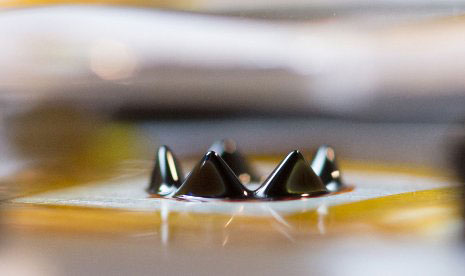 New electrospray thrusters for nanosatellites face some design challenges. To get around the problem, King and his team have developed an elegant strategy: eliminate the expensive and tedious microfabrication required to make the needles by letting Mother Nature take care of the assembly.
New electrospray thrusters for nanosatellites face some design challenges. To get around the problem, King and his team have developed an elegant strategy: eliminate the expensive and tedious microfabrication required to make the needles by letting Mother Nature take care of the assembly.
Aug 30th, 2013
Read more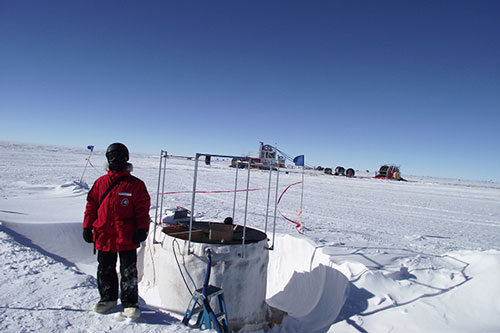 The origin of cosmic rays in the universe has confounded scientists for decades. But a study by researchers using data from the IceCube Neutrino Observatory at the South Pole reveals new information that may help unravel the longstanding mystery of exactly how and where they are produced.
The origin of cosmic rays in the universe has confounded scientists for decades. But a study by researchers using data from the IceCube Neutrino Observatory at the South Pole reveals new information that may help unravel the longstanding mystery of exactly how and where they are produced.
Aug 30th, 2013
Read moreThe proposals selected for Phase 2 of the 2013 NIAC Program address a range of visionary concepts including photonic laser thrusters, extreme sample return, and innovative spherical robots designed for planetary exploration.
Aug 30th, 2013
Read more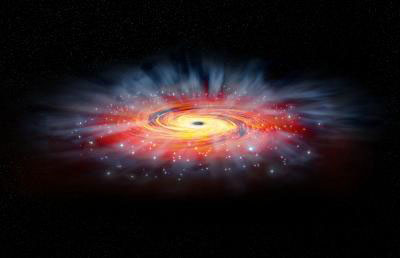 Astronomers using NASA's Chandra X-ray Observatory have taken a major step in explaining why material around the giant black hole at the center of the Milky Way Galaxy is extraordinarily faint in X-rays. This discovery holds important implications for understanding black holes.
Astronomers using NASA's Chandra X-ray Observatory have taken a major step in explaining why material around the giant black hole at the center of the Milky Way Galaxy is extraordinarily faint in X-rays. This discovery holds important implications for understanding black holes.
Aug 29th, 2013
Read more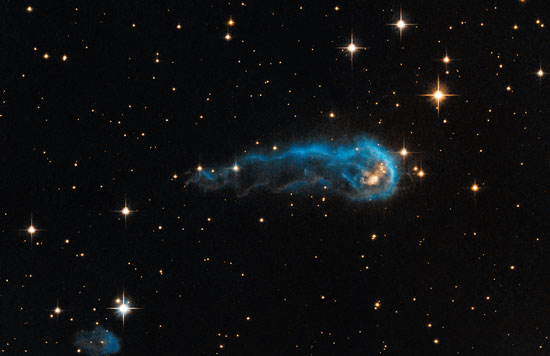 The light-year-long knot of interstellar gas and dust, seen in this Hubble photo, resembles a caterpillar on its way to a feast. Harsh winds from extremely bright stars are blasting ultraviolet radiation at this 'wanna-be' star and sculpting the gas and dust into its long shape.
The light-year-long knot of interstellar gas and dust, seen in this Hubble photo, resembles a caterpillar on its way to a feast. Harsh winds from extremely bright stars are blasting ultraviolet radiation at this 'wanna-be' star and sculpting the gas and dust into its long shape.
Aug 29th, 2013
Read more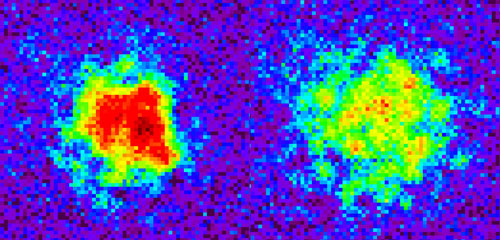 Physicists have reproduced a pattern resembling the cosmic microwave background radiation in a laboratory simulation of the Big Bang, using ultracold cesium atoms in a vacuum chamber at the University of Chicago.
Physicists have reproduced a pattern resembling the cosmic microwave background radiation in a laboratory simulation of the Big Bang, using ultracold cesium atoms in a vacuum chamber at the University of Chicago.
Aug 29th, 2013
Read moreChina's Chang'e-3 lunar probe is scheduled to be launched at the end of this year for a moon landing mission, the State Administration of Science, Technology and Industry for National Defence announced on Wednesday.
Aug 29th, 2013
Read more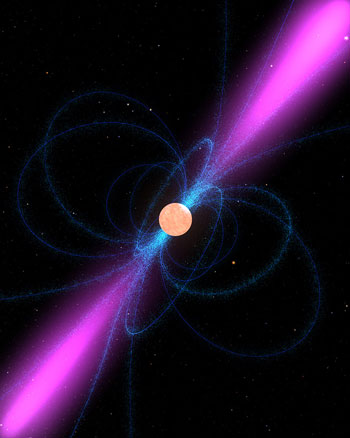 The combined computing power of 200,000 private PCs helps astronomers take an inventory of the Milky Way. The Einstein@Home project connects home and office PCs of volunteers from around the world to a global supercomputer. Using this computer cloud, an international team analysed archival data from the CSIRO Parkes radio telescope in Australia. Using new search methods, the global computer network discovered 24 pulsars.
The combined computing power of 200,000 private PCs helps astronomers take an inventory of the Milky Way. The Einstein@Home project connects home and office PCs of volunteers from around the world to a global supercomputer. Using this computer cloud, an international team analysed archival data from the CSIRO Parkes radio telescope in Australia. Using new search methods, the global computer network discovered 24 pulsars.
Aug 29th, 2013
Read more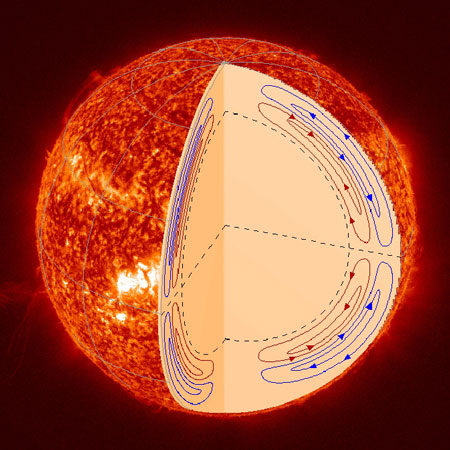 Using an instrument on NASA's Solar Dynamics Observatory, called the Helioseismic and Magnetic Imager, or HMI, scientists have overturned previous notions of how the sun's writhing insides move from equator to pole and back again, a key part of understanding how the dynamo works. Modeling this system also lies at the heart of improving predictions of the intensity of the next solar cycle.
Using an instrument on NASA's Solar Dynamics Observatory, called the Helioseismic and Magnetic Imager, or HMI, scientists have overturned previous notions of how the sun's writhing insides move from equator to pole and back again, a key part of understanding how the dynamo works. Modeling this system also lies at the heart of improving predictions of the intensity of the next solar cycle.
Aug 29th, 2013
Read more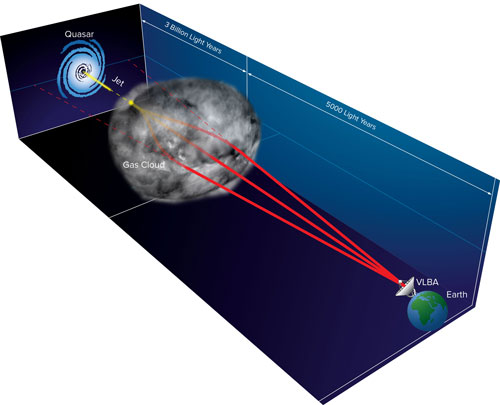 Multiple-imaging event will help astronomers learn new details about turbulent gas within our own Milky Way galaxy.
Multiple-imaging event will help astronomers learn new details about turbulent gas within our own Milky Way galaxy.
Aug 28th, 2013
Read moreMOND, a modified law of gravity, correctly predicted in advance of observations the velocity dispersion - the average speed of stars within a galaxy relative to each other - in 10 dwarf satellite galaxies of the Milky Way's giant neighbor Andromeda. MOND also detected subtle differences in gravity fields that dark matter theory says should be uniform.
Aug 28th, 2013
Read more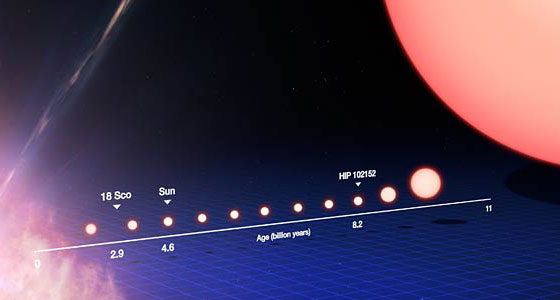 A team led by astronomers in Brazil has used ESO's Very Large Telescope to study the oldest solar twin known to date. Located 250 light-years away, the star HIP 102152 is more like the Sun than any other solar twin - except that it is nearly four billion years older. This older twin may be host to rocky planets and gives us an unprecedented chance to see how the Sun will look when it ages.
A team led by astronomers in Brazil has used ESO's Very Large Telescope to study the oldest solar twin known to date. Located 250 light-years away, the star HIP 102152 is more like the Sun than any other solar twin - except that it is nearly four billion years older. This older twin may be host to rocky planets and gives us an unprecedented chance to see how the Sun will look when it ages.
Aug 28th, 2013
Read moreScientists have detected magmatic water - water that originates from deep within the Moon's interior - on the surface of the Moon. These findings represent the first such remote detection of this type of lunar water, and were arrived at using data from NASA's Moon Mineralogy Mapper (M3).
Aug 27th, 2013
Read more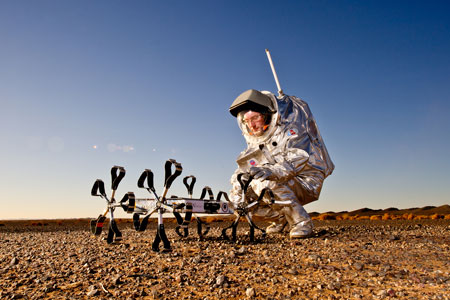 From 4-10 October, more than twenty organizations spread across four continents will be exploring Mars - and discovering more about Earth in the process. A campaign of networked Mars analog activities is being launched to celebrate World Space Week (WSW) 2013.
From 4-10 October, more than twenty organizations spread across four continents will be exploring Mars - and discovering more about Earth in the process. A campaign of networked Mars analog activities is being launched to celebrate World Space Week (WSW) 2013.
Aug 27th, 2013
Read more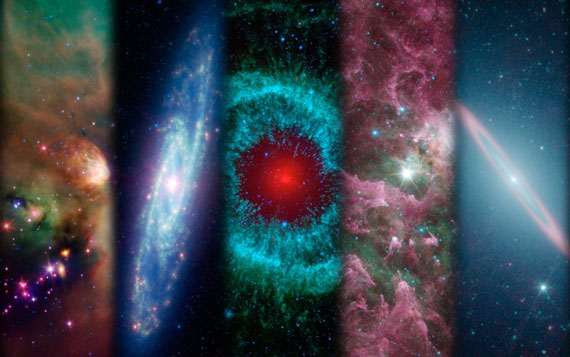 Ten years after a Delta II rocket launched NASA's Spitzer Space Telescope, lighting up the night sky over Cape Canaveral, Fla., the fourth of the agency's four Great Observatories continues to illuminate the dark side of the cosmos with its infrared eyes.
Ten years after a Delta II rocket launched NASA's Spitzer Space Telescope, lighting up the night sky over Cape Canaveral, Fla., the fourth of the agency's four Great Observatories continues to illuminate the dark side of the cosmos with its infrared eyes.
Aug 23rd, 2013
Read more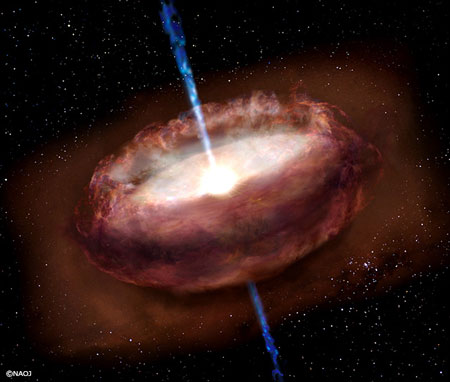 An international team of astronomers that are members of the Strategic Exploration of Exoplanets and Disks with Subaru Telescope (SEEDS) Project has observed a disk around the young star RY Tau (Tauri). The team's analysis of the disk shows that a 'fluffy' layer above it is responsible for the scattered light observed in the infrared image.
An international team of astronomers that are members of the Strategic Exploration of Exoplanets and Disks with Subaru Telescope (SEEDS) Project has observed a disk around the young star RY Tau (Tauri). The team's analysis of the disk shows that a 'fluffy' layer above it is responsible for the scattered light observed in the infrared image.
Aug 23rd, 2013
Read more